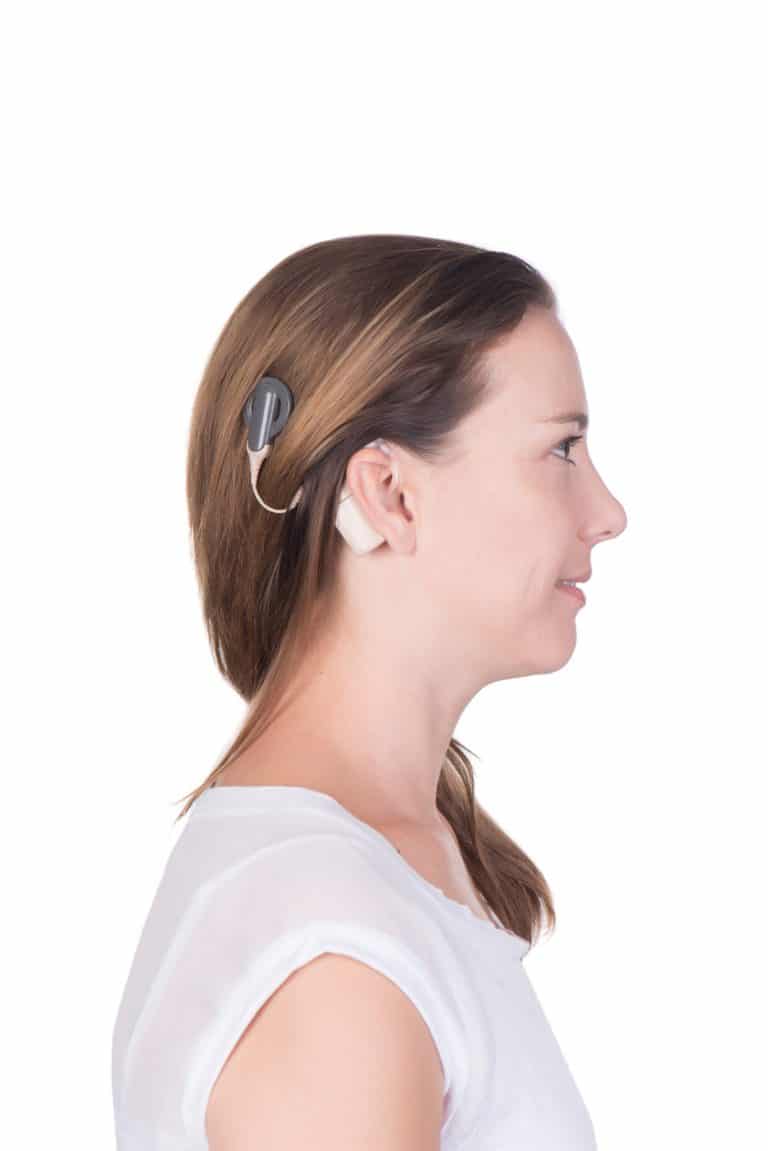Hearing aids are a boon to millions of Americans with hearing loss, but, as well as they perform, they do have their limitations and won’t work for all types of hearing loss.

They must be cleaned frequently, their batteries need replacing on a regular basis, and constant exposure to heat, humidity and earwax buildup in the ear canal makes them prone to damage. For some individuals, implantable hearing devices might be the key to improved communication.
Implantable hearing devices are surgically implanted instruments designed to improve the transmission of sound vibrations by directly stimulating the bones of the middle ear. There are several different types of implantable hearing devices; these include cochlear implants, bone anchored hearing aids and auditory brainstem implants.
How Do Implantable Hearing Devices Work?
Implantable hearing devices are less prone to feedback issues that can bedevil those who wear hearing aids, and some devices can be kept in place while a patient bathes and exercises.
Types of Implantable Hearing Devices
Cochlear Implants
Cochlear implants are devices that are implanted surgically behind the ear. They contain an external portion consisting of a microphone, sound processor and transmitter, and an internal portion that includes a receiver and a group of electrodes.
How Does a Cochlear Implant Work?
The microphone picks up sounds in the environment, which are then converted by the sound processor into electronic signals that are sent to the transmitter. The transmitter forwards these signals to the receiver, where they are then passed on to the electrodes. The electrodes stimulate the auditory nerve, which carries the information directly to the brain, where it is interpreted as sound.
Cochlear implants allow those who are profoundly deaf to understand speech and other sounds.
Bone Anchored Hearing Devices

Bone anchored hearing devices consist of a titanium implant, an external abutment, and a sound processor. These devices work by transmitting sound vibrations through the external abutment to the titanium implant, which naturally integrates (“ossifies”) with the skull bone over time.
How Does a Bone Anchored Hearing Device Work?
The bones of the skull act as conductors, transmitting these sound vibrations to the inner ear, where the nerve fibers responsible for hearing are stimulated. A bone-anchored hearing device is especially useful for patients with conductive hearing loss and single-sided deafness.
Auditory Brainstem Implants
Auditory brainstem implants (ABI) are similar in concept to cochlear implants but rely on electrodes placed directly on the brainstem that relay electronic signals to the brain. ABIs are less common, usually reserved for individuals whose auditory nerve does not function properly due to disease or trauma.
The majority of cases are related to a rare type of tumor known as neurofibromatosis type II (NF2). These patients have sensorineural hearing loss and, because the auditory nerve is damaged, do not benefit from cochlear implants.
Call Burlington Ear Nose & Throat at (319) 752-2725 for more information or to schedule an appointment.